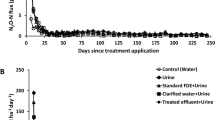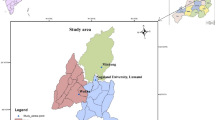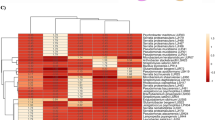Abstract
One of the most important roles of the resource-oriented sanitation (ROS) systems is handling source-separated human sanitary wastes so that they can be utilized for other purposes. Usually, these systems are constructed to use the source-separated feces as fertilizers or soil conditioners. However, there are some challenges with these systems, such as their high volume, low degradation rate, and lack of fertility management. To overcome these challenges and manage source-separated human feces more efficiently in ROS systems, utilizing nitrifying microorganisms is useful. Since the presence of both carbon and nitrogen compounds is essential for keeping these microorganisms active, and the feces contains plenty of carbon and nitrogen, higher growth rates of nitrifying microorganisms can be achieved for biodegrading the feces and modifying its fertility. In this study, the fate of carbon and nitrogen compounds in the presence of Nitrosomonas europaea bio-seeds was investigated. The results show that adding bio-seeds leads to better feces degradation. Moreover, the addition of bio-seeds can increase the fertilization capacity of feces for use as a fertilizer or soil conditioner, by reducing ammonia loss and providing a more variable nitrogen composition. This approach can be useful for handling source-separated human feces in ROS system practices.
Graphical Abstract






Similar content being viewed by others
References
Hashemi, S., Han, M., Kim, T., Kim, Y.: Innovative toilet technologies for smart and green cities. In: Proceedings of the 8th Conference of the International Forum on Urbanism (IFoU), Incheon, Korea, June 22–24 (2015). doi:10.3390/ifou-E013
Hashemi, S., Han, M., Kim, T.: Optimization of fertilization characteristics of urine by addition of Nitrosomonas europaea bio-seed. J. Sci. Food Agric. 96(13), 4416–4422 (2016). doi:10.1002/jsfa.7652
Kim, Y., Hashemi, S., Han, M., Kim, T., Sohn, H.G.: The waterless portable private toilet: an innovative sanitation solution in disaster zones. Disaster Med. Public Health Prep. 10(2), 281–285 (2016). doi:10.1017/dmp.2015.166
Han, M., Hashemi, S., Joo, S.H., Kim, T.: Novel integrated systems for controlling and prevention of mosquito-borne diseases caused by poor sanitation and improper water management. J. Environ. Chem. Eng. 4(4), 3718–3723 (2016). doi:10.1016/j.jece.2016.08.013
Lopez Zavala, M.A., Funamizu, N., Takakuwa, T.: Onsite wastewater differentiable treatment system: modelling approach. Water Sci. Technol. 46(6–7), 317–324 (2002)
Xu, G., Fan, X., Miller, A.J.: Plant nitrogen assimilation and use efficiency. Annu. Rev. Plant Biol. 63, 153–182 (2012)
European Commission.: Regulation (EC) No 2003/2003 of the European Parliament and of the Council of 13 October 2003 relating to fertilizers. Off. J. Eur. Commun. L304, 1–194 (2003)
Wagner, M., Loy, A.: Bacterial community composition and function in sewage treatment systems. Curr. Opin. Biotechnol. 13(3), 218–227 (2002)
Texier, A.C., Zepeda, A., Gómez, J., Cuervo-López, F.: Simultaneous elimination of carbon and nitrogen compounds of petrochemical effluents by nitrification and denitrification. In: Patel, V. (eds.) Petrochemicals, pp. 101–134. InTech, Rijeka (2012)
Krummel, A., Harms, H.: Effect of organic matter on growth and cell yield of ammonia-oxidizing bacteria. Arch. Microbiol. 133, 50–54 (1982)
Hommes, N.G., Sayavedra-Soto, L.A., Arp, D.J.: Chemolithoorganotrophic growth of Nitrosomonas europaea on fructose. J. Bacteriol. 185(23), 6809–6814 (2003)
Lopez Zavala, M.A., Funamizu, N., Takakuwa, T.: Biological activity in the composting reactor of the biotoilet system. Bioresour. Technol. 96, 805–812 (2005)
Shier, D., Butler, J., Lewis, R.: Hole’s human anatomy & physiology. McGraw-Hill, New York (2007)
Leslie Grady Jr, C.P., Lim, H.C.: Biological wastewater treatment. Marcel Dekker, New York (1980)
Lopez Zavala, M.A., Funamizu, N.: Effect of moisture content on the composting process in a biotoilet system. Compost Sci. Util. 13(3), 208–216 (2005)
US Environmental Protection Agency: Methods for chemical analysis of water and wastes. US Environmental Protection Agency, Washington DC (1983)
Sikora, L.J., Stott, D.E.: Soil organic carbon and nitrogen. In: Doran, J.W., Jones, A.J. (eds.) Methods for assessing soil quality, pp. 157–167. Soil Science Society of America Special Publication, Madison (1996)
American Public Health Association/American Water Works Association/ Water Environment Federation: Standard methods for the examination of water and wastewater. American Public Health Association/American Water Works Association/Water Environment Federation, Washington DC (2012)
Acknowledgements
This research was supported by Institute of Construction and Environmental Engineering at Seoul National University. The authors wish to express their gratitude for the support. Furthermore, this work is financially supported by Korea Ministry of Environment (MOE) as Eco-Innovation project (413-111-008), Advanced Industrial Technology Development project (2014000150010) and Waste to Energy · Recycling Human Resource Development project.
Author information
Authors and Affiliations
Corresponding author
Rights and permissions
About this article
Cite this article
Hashemi, S., Han, M. Effect of Nitrosomonas europaea Bio-Seed Addition on the Fate of Carbon and Nitrogen Compounds in Human Feces. Waste Biomass Valor 9, 715–723 (2018). https://doi.org/10.1007/s12649-017-9857-5
Received:
Accepted:
Published:
Issue Date:
DOI: https://doi.org/10.1007/s12649-017-9857-5




